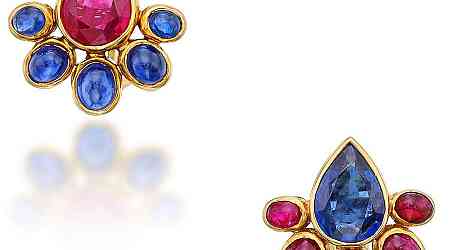Have you ever given any thought to how engagement rings came to be what they are today? Every nation has historical customs that have been passed down from one generation to the next.
Try to consider whether you'd like to ever combine the customs around engagement rings that are discussed below from around the world into your own engagement experience.
Circles were seen as a sign of eternity in ancient Egypt, which is where engagement rings are thought to have first appeared. Couples getting married in ancient Egypt would trade "rings" fashioned from braided reeds.
These reeds would be worn on the left hand. According to legend, the left hand contains a vein known as the "vena amoris" that connects to the heart. The ring should be worn on the finger that has the vein running straight to it since, according to mythology and tradition, the heart stands for love and fidelity.
The customs surrounding engagement rings that are common in western society today are modelled after this Egyptian custom. Men often do not receive an engagement ring; instead, women receive one as a sign of their engagement.
Today, a lot of people prefer Moissanite rings for their engagements. To demonstrate engagement, things are handled a little differently in other parts of the world.
Here are some additional nations along with their customs regarding jewellery and engagement rings.
Latin American nations including Argentina, Chile, Colombia, Cuba, Peru, Venezuela, and others
The bride and groom traditionally exchange rings, which they both wear on their right hands up to the wedding day, in various parts of Latin America. Moissanite rings are commonly used on this side of the world as well.
After being married, they symbolically change their wedding band to their left hand and wear it there going forward. There are many more fascinating traditions. For instance, in Argentina, both the bride and the groom wear silver engagement rings up to the wedding, when they exchange them for gold bands. In Argentina, diamond engagement rings are not very common.
Western Europe
Instead of the left hand, people in these nations wear their engagement rings on the right. In addition to Norway, England, France, and Germany may also exhibit this. Many of these customs are passed down from one generation to the next, but no matter whose finger the ring is worn on, love and fidelity are the concepts that each band represents.
Irish Claddagh ring
The Irish Claddagh ring is a symbol of loyalty, love, and friendship. The hands, heart, and crown on the ring stand for friendship, love, and loyalty, respectively. There are actions you can do to communicate your relationship status to others when wearing a Claddagh ring.
To demonstrate that you are unmarried, you wear the ring on your right hand with the crown facing you. If you are in a relationship, place the ring on your right hand with the crown facing outward.
To signify engagement, place the ring on your left hand with the crown facing you. To signify marriage, wear it on your left hand with the crown facing away from you.
Indian Cultures
Instead of engagement rings, women in West Bengal, India, and other Indian cultures wear bangle bracelets made of glass, gold, iron, or other metals. The bangles stand for fortune and wealth, which are crucial to Indian weddings.
On their wedding day, Indian ladies are also heavily ornamented with gold necklaces, rings, nose rings, belts, and headpieces, among other pieces of jewellery. The use of Moissanite jewellery is pretty common.
Hindu Cultures
In some Hindu societies, women don toe rings rather than finger bands to denote engagement. The "Bichiya" toe rings are thus named. Women do, however, wear engagement rings in the western style in various Hindu traditions.
Although there are many different justifications for wearing toe rings, one of them is the notion that they put pressure on the reproductive system's health-maintenance nerves.
Japan
In Japan, married women typically wear just one ring, but this isn't because they never wear an engagement ring. They do, but after getting hitched, the wedding band takes its place and the engagement ring is only worn on exceptional occasions.
However, Japanese wedding bands frequently use platinum rather than gold and feature straightforward designs.
Israel
Jewish engagement rings used to be rather complicated with exquisite decorations and too much intricacy to be worn on a regular basis. In the past, they were even made in the shape of synagogues or even had functional doors.
However, this is no longer the standard. But nowadays, Israeli brides want more contemporary styles that are more recognisable to us, like solitaires and three-stone rings. Some upcoming brides also decide to engrave a special message or their loved one's initials on their engagement rings.
France
In the West, people typically wear diamonds on their engagement rings, but in France, people wear rubies, emeralds, and sapphires instead. With her sapphire ring, Kate Middleton undoubtedly created a trend in the United States, and more individuals are moving away from the diamond.
Turkey
Turkey has a particularly special engagement custom where the couple waits in front of a senior family member while the little girl they chose to carry the rings presents them to the senior family member on a tray.
The senior family member cuts the long red ribbon that connects the rings, gives the customary declaration of blessings and wishes, and then hands the rings to the bride and groom. The woman frequently receives more jewellery at the ceremony, while the groom is typically given a wristwatch.
USA
In the USA, both the wedding band and the engagement ring are worn on the left ring finger by women, and occasionally by males as well. The wearer's own preference will determine how they are stacked on the finger.
The most common engagement rings sold here are diamonds, and it is still typical for the groom to ask the bride, "Will you marry me?" Diamonds with a round cut are the most common.
Kenya
Instead of an engagement ring with gemstones, extravagant jewellery is much more frequently given as a present in Kenya. Since ornamental beading has long been a part of their culture, engagement jewellery with elaborate, vibrant beading is preferred.
Although Western culture has a significant impact on the rest of the world, many nations have been able to preserve their own engagement customs. Jewellery such as Moissanite engagement rings is still frequently used as an engagement marker, despite the fact that some cultures, like China, prefer to exchange other items besides jewellery.
Engagement jewellery has a very rich history in addition to the obvious benefits of being worn and being a symbol of betrothal. Rings have been worn as a symbol of ownership for ages. Later, they came to represent love and the desire for marriage.
Best last minute News headlines from Your Country and inborn language
Yachts News | Discover the Exclusive World of Yachts
Yachts Listings for Sale and Charter
immediate for delivery New Exclusive Hyper, Mega, Classic and Super sports Cars
Crypto Coins for FREE when use this link































